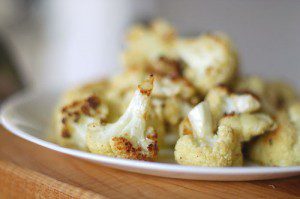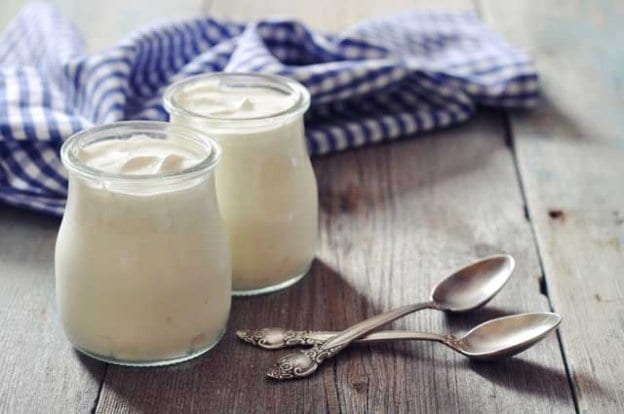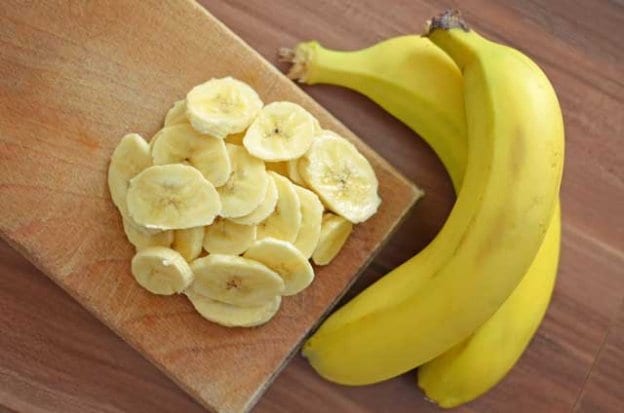Plain nonfat Greek yogurt is an excellent source of protein for a person on a diabetic diet. It is low in sugar and carbs, and it is considered a complete protein because it contains all 9 of the essential amino acids your body needs.
Category: Diet And Exercise
Bananas and Diabetes: Good Mix?
We have all heard the saying “a banana a day keeps the doctor away”. Typically, the fruit in this saying is an apple but you get the general idea. Fruit is good for the body. But fruit is full of natural sugar so what happens when you have diabetes?
Researchers Find New/Efficient Way To Exercise

Many people believe that you can only get fit if you spend extremely long stints at the gym several times a week working out. According to the scientists at Liverpool John Moores University and the University of Birmingham, new research has found that you can get the same results in less than a third of the time it would take on at the gym.
Currently, it is recommended by the World Health Organization (WHO) and the UK Department of Health that people do (of all ages) get some sort of physical activity three to five hours weekly. This is to increase health and fitness and also prevents chronic diseases, thereby creating a longer life.
Continue reading “Researchers Find New/Efficient Way To Exercise”
Diabetes, Cashews & Dementia
 What do cashews and dementia have in common? They are commonly linked with diabetes. The first as a preventative aid and the second a byproduct of uncontrolled diabetes.
What do cashews and dementia have in common? They are commonly linked with diabetes. The first as a preventative aid and the second a byproduct of uncontrolled diabetes.
According to TopNews, “A new study by the researchers from Universities of Montreal, Canada and de Yaounde Cameroun has indicated towards the effectiveness of the cashew seed extract against diabetes.”
Pierre Haddad is a professor of pharmacology in Montreal who indicated, “Cashew seeds extract have effectively stimulated the absorption of blood sugar by muscle cells, among all the extracts tested.”
The reason the research is significant is because the cashew is a natural and sustainable resource that can be used in cost effective treatment of diabetes. Obviously more research will be needed, but the use of cashews in the care of diabetes may be viewed as another positive in the ongoing quest to find treatments and an ultimate cure for diabetes.
Haddad is quoted by TopNews as saying, “Our study validates the traditional use of cashew tree products in diabetes and points to some of its natural components that can serve to create new oral therapies.”
Cashews come from a fruit known as cashew apples. The apple is small and typically rots within 24 hours of picking. The research extended to the apple, the leaf and the bark of the cashew apple trees. Cashews are said to be anti-inflammatory and can be used to control the blood sugar levels in those living with diabetes.
Meanwhile, TopNews also reported, “Mayo Clinic’s Florida campus and the University of California have conducted a research on whether dementia varies with people having diabetes or not. Blood samples of 211 people with dementia and 403 without dementia were collected to compare the ratio of two dissimilar types of amyloid beta proteins in blood.”
It has been said that Alzheimer’s is a form of diabetes because insulin levels are extremely low in patients with Alzheimer’s. However, the report suggests that dementia in diabetes is different than Alzheimers, “The findings show that people who have diabetes are more likely to get affected by vascular disease, which affects blood flow in brain vessels causing dementia. People who suffer from dementia without diabetes are affected by brain plaque deposits, which are generally found in Alzheimer patients,” said TopNews.
The study was published in the Archives of Neurology. TopNews reports, “Those having dementia without diabetes can cure the same by taking high levels of vitamin E in their meals, as Vitamin E guards the brain against oxidative stress, which causes Alzheimer.”
To avoid dementia in adults the findings suggest that, “The intake of four antioxidants — vitamin E, vitamin C, beta carotene and flavanoids — can improve the function of the memory.”
In diabetes, dementia is often the result of vessel damage between the heart and brain. By understanding the cause medical practitioners may be able to better guard against the instance of dementia by assisting their diabetic patients with information and medication that may prove helpful.
These two stories continue to point to the wide variety of tools researchers are using in order to gain a better understanding of diabetes and how it affects patients. Similarly they are also working to use every available resource to better the lives of their patients.
The overall care of those with diabetes continues to improve with each passing year and research findings like these assist in advancing the cause of care.
New Links Connecting Diabetes and Fast Food
Diabetes and fast food can co-exist but count your carbs & get exercise. What is true in the United States seems to be true of many other nations when it comes to diabetes. When the population as a whole gains weight the instances of diabetes increases. Research in one Asian country seems to blame western fast food for the dramatic rise in diabetes.
Garvan Institute of Medical Research
Australia’s Garvan Institute of Medical Research conducted the study in Ho Chi Minh City, Vietnam. The BBC reported that, “about 11% of men and 12% of women… had undiagnosed type 2 diabetes.” This didn’t count the 4% who had already been confirmed as having diabetes.
Professor Tuan Nguyen of the Garvan Institute told the BBC, “Dietary patterns have been changing dramatically in Vietnam in recent years, particularly in the cities as they become more Westernized.”
It seems that studies in various other Asian countries point to the potential of fast food and a change in lifestyle as the predominant reason for the spread of diabetes.
I suppose the greatest difficulty for leaders of any country is that food is the one area that can be hard to police and may be viewed as a harsh and unusual form of control. Many choose fast food for convenience while other choose it for taste. In all cases it is a sense of freedom that predicates the choice of what food is ultimately consumed.
Diabetes and Fast Food in the US
In America where the financial system is built on capitalism it can be hard to deny paying customers the food items for which they are willing to pay. If a fast food restaurant moved toward a position of only serving health food they may find that their customer base would shrink dramatically. In fact the success of U.S. fast food chains has convinced them they have a formula that works. From a business standpoint it makes sense to export the product and increase their profitability.
Most people do not want someone telling them what they can and can’t eat. Fast food restaurants certainly aren’t going to be the ones to force you to eat something you don’t want. However, they will change direction when customers demand changes.
Any changes that we are going to see in fast food restaurants will be because we, as consumers, make different choices. If restaurants discover that a healthier product will sell they will begin offering healthier foods in general. The menu of virtually every restaurant is consumer driven.
Restaurant owners want to be successful in business so they will be responsive to consumer demand.
To put this in perspective you need to know that as a diabetic or pre-diabetic the changes you need to make will be changes you personally make. Fast food restaurants will not change their menu simply because you have dietary restrictions. You will be responsible for your own diet and lifestyle.
At some point one has to think that when/if diabetes becomes an epidemic it will become the best interest of the fast food restaurants to alter their menu because at that point it is conceivable those with diabetes will sadly become a group large enough to tip the balance in favor of healthy foods and adjusted portion sizes.
However, instead of waiting for this scenario to happen you can take control of your health and begin making personal changes today – on your own. This self-disciplined approach frees you from having to wait until a universal change takes place in what truly would be a worse case scenario.
Accountability May Be Key to Diabetic Weight Loss
What if it were possible to lose weight and enjoy fewer symptoms of diabetes simply by participating in a program designed to encourage you to improve your overall lifestyle choices?
 What if it were possible to lose weight and enjoy fewer symptoms of diabetes simply by participating in a program designed to encourage you to improve your overall lifestyle choices? A recent study suggests it may be a bigger help than anyone previously thought.
What if it were possible to lose weight and enjoy fewer symptoms of diabetes simply by participating in a program designed to encourage you to improve your overall lifestyle choices? A recent study suggests it may be a bigger help than anyone previously thought.
According to the American Diabetes Association (ADA), “A community-based lifestyle intervention program, modeled after one used in a landmark government funded diabetes-prevention study, can help participants in a group setting achieve weight loss and blood glucose reductions comparable to those achieved with individual counseling from health professionals.”
In the other words if a program administered by lay personnel could be just as effective at helping those with diabetes attain a better balance in weight as working with a paid professional for the same services.
The ADA said, “In the Healthy Living Partnerships to Prevent Diabetes (HELP PD) study, participants were divided into two groups: a lifestyle weight loss group, which received six months of weekly behavioral weight loss sessions in a group setting, followed by monthly follow-up meetings, at which they were encouraged to change eating behaviors and exercise up to 180 minutes per week; and a usual care group, which received two visits with a dietitian and a quarterly newsletter with tips for lifestyle changes. The group weight loss sessions were delivered by lay community health workers trained and supervised by dietitians.”
So, how significant were the overall results? The ADA advises, “The study found that those in the lifestyle intervention group achieved and maintained significantly greater weight loss (an average of 7.3 percent of body weight) than those in the regular care group (who achieved an average loss of just 1.3 percent of body weight) after 12 months. The lifestyle intervention group also reduced blood glucose levels by an average of over 4 mg/dl, from 105.8 mg/dl to 101.2 mg/dl, after 12 months, compared to an average drop of less than 2 mg/dl (to 104 mg/dl) for the regular care group. The results for the lifestyle group mirrored those achieved over three years by participants in the landmark National Institutes of Health-sponsored Diabetes Prevention Program, in which individuals with glucose levels in the pre-diabetic range were able to reverse the course of their disease by losing 5-7 percent of body weight and exercising 150 minutes per week, in addition to receiving individual counseling sessions with trained behaviorists. In the Diabetes Prevention Program, the weight loss program led to a 58 percent reduction in the development of diabetes, from about 11 percent a year to about 5 percent a year.”
“Study participants will be followed for an additional five years to see whether individuals can maintain weight loss and blood glucose reductions independently, or if they need continued group counseling to do so. The study is being funded by the National Institute of Diabetes and Digestive and Kidney Diseases,” said the ADA report.
Since diabetes and depression often go hand in hand it may be helpful both physically and emotionally to embrace a support group designed to encourage many diabetics to make positive changes today that will have an impact in the future.
A Natural Way To Control Diabetes
Many diabetics are now seeking to control their ailment through holistic methods. Natural herbal and vitamin remedies are replacing traditional therapy, and have consistently produced amazing effects. For centuries, herbal concoctions have had the ability to restore an otherwise lost balance to the body, rendering it possible to rely on its own healing capacity. Diabetics who partake in a regular regimen of herbs and vitamins have reported an improvement in their overall well-being. However, in combination with these natural remedies, patients need to carefully monitor blood sugar levels to assure that their disease is stabilized.
Many diabetics are now seeking to control their ailment through holistic methods. Natural herbal and vitamin remedies are replacing traditional therapy, and have consistently produced amazing effects. For centuries, herbal concoctions have had the ability to restore an otherwise lost balance to the body, rendering it possible to rely on its own healing capacity. Diabetics who partake in a regular regimen of herbs and vitamins have reported an improvement in their overall well-being. However, in combination with these natural remedies, patients need to carefully monitor blood sugar levels to assure that their disease is stabilized.
Herbal Remedies Can Play a Huge Role in Diabetes Management
There is a wide variety of herbal supplements that can be used in addition to healthy diabetic diet and lifestyle. Ongoing research and clinical trials have shown the positive effects that herbs and vitamins have on a typical diabetes patient, in addition to, a significant decrease in risks and complications. Although blood sugar levels are best regulated by a combination of both herbs and vitamins, taking each substance singularly has shown great improvement in diabetics as well.
The following herbs and vitamins have proven to be beneficial in the fight against diabetes:
Used in traditional Chinese medicine to treat diabetes, Asian Ginseng or Ginseng has been proven to produce a blood sugar lowering effect by heightening the release of insulin from the pancreas. Ginseng can also strengthen the immune system, as well as, lower blood pressure. This herb can be added to food or taken as a supplement.
Bilberry can lessen the risks of diabetic complications, primarily eye problems such as retinopathy and cataracts.
A traditional method used to treat diabetes, Stevia can have favorable effects on glucose tolerance. Referred to as “sweet leaf” or “sugar leaf,” Stevia is renowned for its sweet taste. In Japan, this herb is widely marketed as a sweetener and an alternative to sugar.
Cassia or Cinnamon has been proven to significantly lower blood glucose levels. Commonly used in cooking, Cinnamon can often be found in Chinese food.
Proven in clinical tests to stimulate insulin from the pancreas, Fenugreek has also been noted to lower blood sugar levels. Fenugreek seeds can be used as a spice, while the leaves are usually used as a herb. Fenugreek can also be consumed as a supplement.
Gymnema Sylvestre is an Ayuvedic herbal remedy that can assist Type II diabetics with insulin production. Gymnema has also been known to lower blood sugar in Type I and II diabetes.
The blood sugar lowering effect of Bitter Melon has been widely accepted as a herbal remedy for diabetes. The freshly squeezed juice or pulp of this unripe fruit has shown positive effects in Type I and II. Beware of over consumption, however. Too much of this juice can lead to stomach pain and diarrhea.
Aloe Vera, also known as “the healing herb,” is a traditional method used to treat diabetes. The sap and gel extracted from a dried aloe vera can assist in lowering fasting blood glucose levels.
There are also a number of vitamins that are used in the control and management of Type I and II diabetes. Vitamins C and E keep the kidneys healthy, and prevent further damage. Taken with Folic Acid, Vitamin B-6 assists in the prevention of nerve damage, and loss of limbs due to disease complications. Both Magnesium and Zinc relieve neuropathic discomfort, as well as, assist in the effectiveness of insulin. The frequency of consumption of both herbs and vitamins should be listed on the packaging and bottle. It is common practice for most herbal remedies to be taken at least two times per day. To truly determine how many times daily a herb can be used, it is advised to consult with your physician.
Together, you can devise a plan to effectively combat symptoms and complications of your particular case.
Spaghetti Squash Parmesan
A low carb recipe for spaghetti squash parmesan.
 Ingredients
Ingredients
1 Spaghetti Squash, Quartered
1 cup Water
1 1/2 cup Shredded Zucchini
1/2 cup Diced Tomato
1/3 cup Sliced Green Onions
4 tbsp. grated Parmesan Cheese
1 tbsp. Lemon Juice
1 tsp. Basil
1/4 tsp. Dill
1/4 tsp. Ground Black Pepper
Instructions
- Place the squash, cut side up, in a Dutch oven. Add the water. Cover and bring to a boil.
- Reduce the heat and simmer for 13 to 17 minutes, or until squash fibers pull apart easily with a fork.
- Remove the squash from the pan and drain well.
- Scoop out and discard the seeds. Using 2 forks, fluff the flesh into strands.
- In a steamer basket over simmering water, steam the zucchini, covered, for 3 minutes; remove from the heat.
- Discard the cooking liquid from the Dutch oven and dry the pan well.
- Add the squash, zucchini, tomatoes, and green onions to the pan. Stir in the Parmesan, lemon juice, basil, fill, and pepper. Toss well to coat with sauce. Cook 1 minute over medium-high heat.
Roasted Cauliflower With Garlic
A low carb recipe for roasted cauliflower with garlic.
 Ingredients
Ingredients
6 Pounds Of Cauliflower (3 heads), Cut Into 2 inch Wide Florets
1/2 cup Olive Oil
4 garlic Cloves, Minced
1/2 teaspoon Salt
1/4 teaspoon Black Pepper
Instructions
- Preheat oven to 425F.
- Toss cauliflower with oil, garlic, salt, and pepper in a large bowl.
- Spread evenly in 2 shallow baking pans and roast in upper and lower thirds of oven, stirring occasionally, until golden, 25 to 30 minutes.
The Perfect Low Carb Barbeque Sauce
A low or no carb diet can be difficult to stick to. The limitations on the types of meals a person can eat can be discouraging. However, there is hope for those who love a good BBQ now and then. Store bought BBQ sauces can be bitter and the taste undesirable. They may leave a sour taste in a person’s mouth. Not only can low-carb BBQ sauce not taste very well, they can also be extremely expensive. An individual looking for the perfect remedy for their long lost BBQ style meal can look no further. This homemade style is fantastic for chicken, hamburger and even a nice juicy steak.
 The Perfect Low Carb Barbeque Sauce: A low or no carb diet can be difficult to stick to. The limitations on the types of meals a person can eat can be discouraging. However, there is hope for those who love a good BBQ now and then. Store bought BBQ sauces can be bitter and the taste undesirable. They may leave a sour taste in a person’s mouth. Not only can low-carb BBQ sauce not taste very well, they can also be extremely expensive. An individual looking for the perfect remedy for their long lost BBQ style meal can look no further. This homemade style is fantastic for chicken, hamburger and even a nice juicy steak.
The Perfect Low Carb Barbeque Sauce: A low or no carb diet can be difficult to stick to. The limitations on the types of meals a person can eat can be discouraging. However, there is hope for those who love a good BBQ now and then. Store bought BBQ sauces can be bitter and the taste undesirable. They may leave a sour taste in a person’s mouth. Not only can low-carb BBQ sauce not taste very well, they can also be extremely expensive. An individual looking for the perfect remedy for their long lost BBQ style meal can look no further. This homemade style is fantastic for chicken, hamburger and even a nice juicy steak.
Ingredients
1/2 Bottle of Low or No Sugar Ketchup
Splash of Liquid Smoke
1/4 Cup of Splenda
3 Tbsp of Worcestershire Sauce
2 Cloves of Garlic or 4 tsp of Powered
1 tsp of Salt
1 tsp of Pepper
1 tsp of White Pepper
The carb count of the ingredients is as follows; Ketchup: 72 Carbs. Liquid Smoke: 0 Carbs. Splenda: 6.25 Carbs. Worcestershire Sauce: 6.5 Carbs. Garlic: Less than 1 carb in 1 clove.
Instructions
In a sauce pan, combine the following in this order:
- 1/2 bottle of no sugar ketchup
- Splash of liquid smoke
- 3 Tbsp of the Worcestershire sauce
The burner should be turned on to a medium heat. Mix the liquid ingredients. Let this cook for 5 minutes, stirring frequently. Add the following powered ingredients in this order, stir after each ingredient is added:
- 1/4 cup Splenda
- Garlic
- Salt
- Pepper
- White Pepper
Stir well. After 5 minutes, turn the stove to medium high. While continuing to stir, allow the BBQ sauce to start to boil. Before the boiling becomes rapid, turn the stove to low heat. Keep stirring until the BBQ sauce has stopped boiling and it is simmering. Place a lid on top of the sauce pan and let simmer for 2 hours. Every 15 minutes check the BBQ sauce and give it a stir.
The recipe is flexible. An individual could add onions or hot sauce to make it spicier. For a sweeter taste, add another 1/4 of a cup of Splenda. Anything can be added or taken away for the desired BBQ sauce. Remember to watch the carb count closely, it can add up.
This BBQ sauce can be frozen as well. It will last in the freezer for 6 months in a tight sealed container. Refrigeration life can be up to 6 or 7 weeks. This is the perfect solution to an individual’s BBQ desires.


